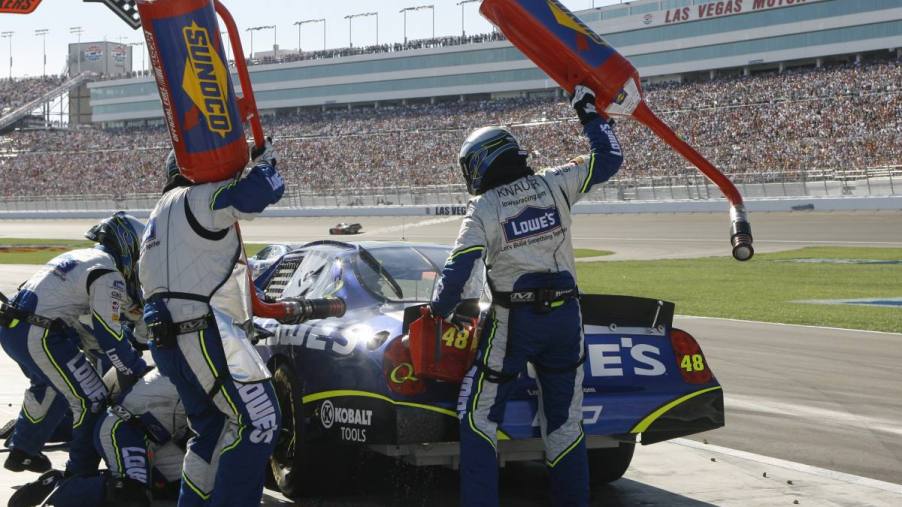
What Type of Fuel Is Used in NASCAR?
Every car powered by a series of small explosions, that is, internal combustion, needs some sort of fuel. However, not all fuels are alike, as evidenced by some cars operating best on lower-grade fuels, while sports cars may require premium fuel for peak performance. Additionally, motorsports use specific fuels you won’t encounter at your local gas station, including NASCAR.
How is racing fuel different from standard gasoline?
While filling up, you’ve undoubtedly noticed different octane ratings available at consumer gas pumps. In the U.S., these are generally 87 for “regular” grade, 89-90 for midgrade and 91-93 for “premium” grade. A fuel’s octane rating denotes its stability, which matters in an engine as more stability can reduce knocking—premature ignition of the fuel in an engine or the igniting of unburned fuel—which can lead to serious engine wear or mechanical issues.
A higher octane rating provides more stability, and when mixed with more oxygen, these fuels increase horsepower output for cars with higher RPMs and compression ratios.
Effectively, through a higher octane rating, and sometimes with the addition of methanol, oxygenates, or other additives, race cars can produce higher power output and better efficiency, absolute requirements in motorsports.
Most motorsports fuel blends wouldn’t be reasonable in your family SUV—or they might not even work to propel the car in some cases—as these are designed to provide pinnacle performance under certain guidelines and for use with select engines.
Sunoco fuel is the official partner of NASCAR
Sunoco, which was founded in 1920 in Ardmore, Pennsylvania, has served as the official fuel provider of NASCAR since 2004. As such, Sunoco is the exclusive fuel provider for the NASCAR Cup, Xfinity and Craftsman Truck Series.
Since 2011, Sunoco Green E15 has powered all top three series of NASCAR. Green E15 has a 98-octane rating and includes 15% volume corn-based ethanol and about 5% oxygen for increased performance.
Sunoco claims the fuel also produces about 20% less carbon emissions than previous fuels used by the racing organization. Interestingly enough, the “green” in Green E15 isn’t a marketing term. Green E15’s color is actually green.
How much fuel do NASCAR races consume?
The fuel cell or gas tank in a NASCAR Cup Series car is 18 gallons, but as anyone who has ever watched a race knows, that is far from enough to power cars the hundreds of miles traversed during a race.
How much fuel a NASCAR car uses during a race depends on a myriad of factors, including the track, the racing conditions, temperature, race strategies or whether the car is “drafting” or running at the front of the pack.
However, any way you slice it, NASCAR cars aren’t exactly fuel sippers. Typically, NASCAR race cars get about 2-5 miles per gallon, Flow Racers notes. As such, each car may consume over 100 gallons during a 500-mile race. Multiply this figure by 36 cars, the average field for the 2023 season, and several thousand gallons of Green E15 will be used during the race.
Using 3,500 gallons consumed during a typical race, and over the course of a 36-week season, the NASCAR Cup Series could use about 126,000 gallons of racing fuel annually. That’s a lot of green.



